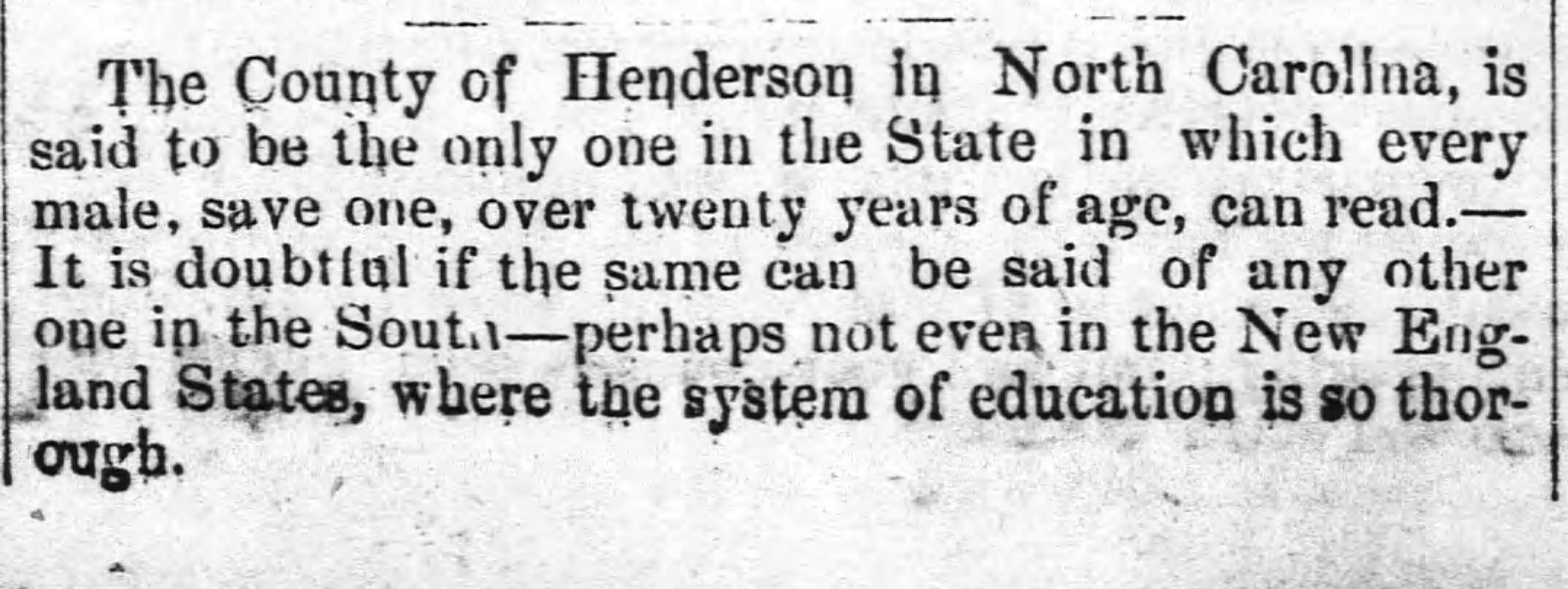I found this little nugget in the American Advocate out of Kinston, NC, courtesy of Newspapers.com. It was tucked away at the bottom of the 4th column on the second page of the 25 August 1858 issue and somehow it just grabbed my imagination. Historically, writers have had a tendency toward hyperbole and I know that it is highly unlikely that this guy actually made any sort of scientific inquiry into this topic. Did that stop me from checking it out? Absolutely not.
Henderson County was created out of Buncombe County in the mountains of western North Carolina along the South Carolina border in 1838. There were two districts for that county’s 1860 U.S. Federal Census: Hendersonville and “Not Stated.” I couldn’t help but be a little impressed when I noticed that column 13, which asked whether any resident over the age of 20 was not able to read and write, was blank throughout all 9 pages of Hendersonville’s census. Then I got to the “Not Stated” section for residents outside of town and saw that there was definitely more than one adult male noted to be unable to read and write. [1860 U.S. Census, Henderson County, NC, population schedule: digital images, Ancestry (http://www.ancestry.com: accessed 8 November 2015); from Family History Library microfilm publication 803901, roll M653_901]
I had my answer but I was still intrigued by the comparison to New England’s educational system so I kept looking. Although North Carolina’s original state constitution included a provision for free public schools, the process suffered decades of delays until the 1830s and ’40s saw an incredible push in organization. In February of 1858 the Superintendent of Common Schools, Rev. Dr. Calvin H. Wiley, published an article in the North Carolina Journal of Education comparing North Carolina schools to the rest of the country. Dr. Wiley concluded that
“Upon a calm review of the entire facts, it is neither immodest nor unjust to assert that North Carolina is clearly ahead of all the slave-holding States with her system of public instruction, while she compares favorably in several respects with some of the New England and North-western States.”
Unfortunately, Charles Lee Smith reported in 1888 that “the public-school system had reached its highest efficiency at the outbreak of the (Civil) War. As a result of that conflict the permanent school fund was almost entirely destroyed, and the public schools were closed until about 1870.” [Charles Lee Smith, The History of Education in North Carolina (Washington, DC: Government Printing Office, 1888), 164-170. Available online from the University of North Carolina at: http://docsouth.unc.edu/true/smith/smith.html#p164]
Now that this little BSO has been polished and filed away, where was I? Oh, yeah. Research!


